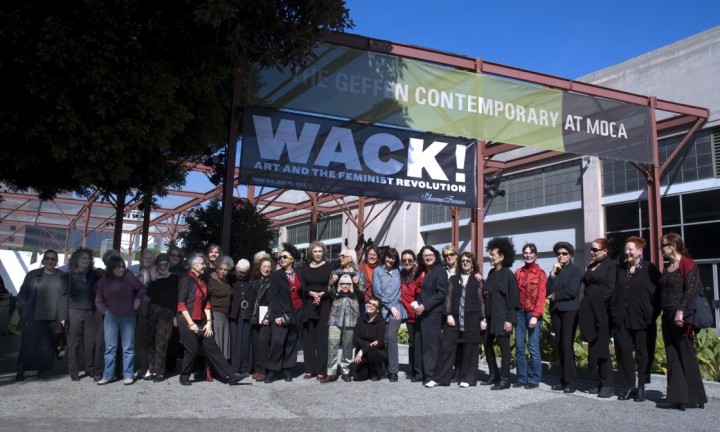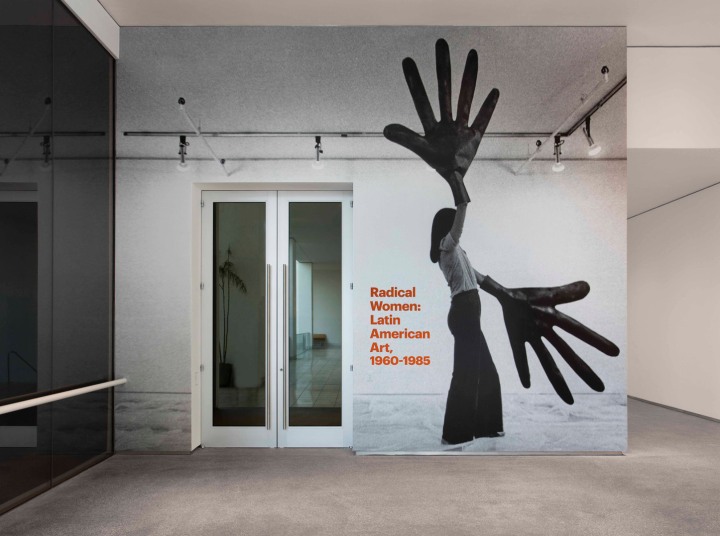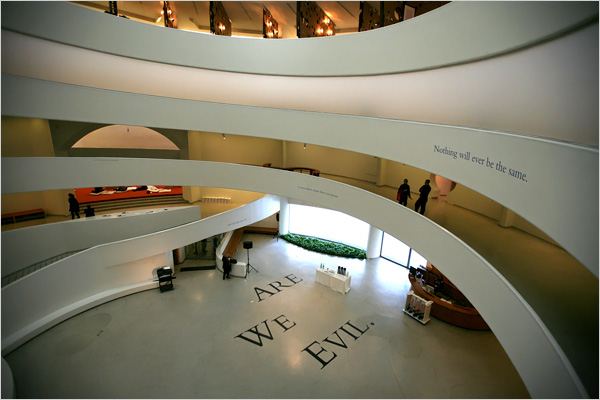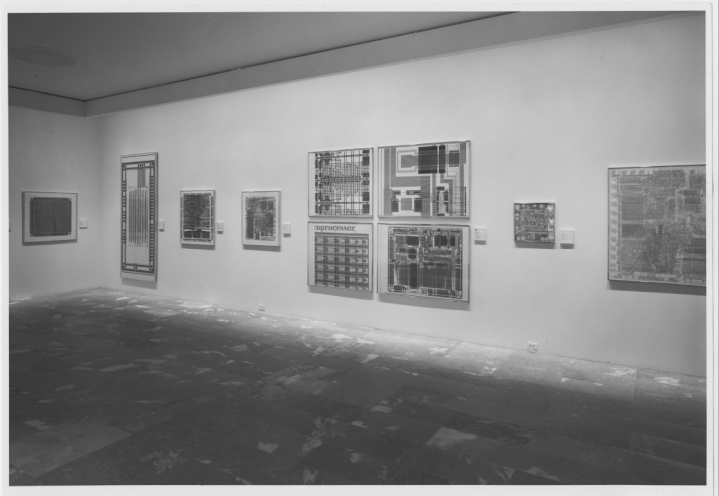Where did the audaciously curated group exhibitions go? I’m talking about daring concepts, multi interpretations, chunks of text, and many artists; an exhibition that tries to make a point. Yeah sure, Biennials, Triennials and Quinquennial are doing that, but I feel like museums are overwhelmingly organising solo-exhibitions.
Where are exhibitions like Centre Pompidou’s (although problematic) Magiciens de la terre in 1989, the travelling exhibition WACK! Art and the Feminist Revolution organised by MOCA in 2007, Guggenheim’s theanyspacewhatever in 2009, Tate’s travelling Soul of a Nation: Art in the Age of Black Power in 2017, or the travelling Radical Women: Latin American Art, 1960–1985 organised by the Hammer Museum that took place in 2017?
Don’t get me wrong, I extremely enjoy solo exhibitions such as Adrian Piper‘s in-depth solo at the MoMA last year and Hélio Oiticica‘s at the Whitney the year before. However, a daringly curated group exhibition is just extra. There can be all sorts of reasons to explain this shift. It might be more cost-effective to organise a solo show, or they might be more accessible to a larger audience.
MoMA’s website perfectly lends itself to research when the boom in group exhibitions came about and when it ended. While during the 1980s, there are mainly solo exhibitions, at the end of 1990 there is an abrupt influx of group shows. Information Art: Diagramming Microchips (aww cute right?), CommuNYCations: Public Mirrors: Artists Against Racial Prejudice (still relevant), High and Low: Modern Art and Popular Culture, INASMUCH as It Is Always Already Taking Place, Electric Blanket: AIDS Projection Project; there were more group shows than solo shows and most of them had bold themes. Make no mistake, throughout the 1990s, the MoMA kept on organising solo exhibitions, or two-person shows, but also some groups exhibitions that I would like to see now sooo badly, like British Photography from the Thatcher Years in 1991, Sense and Sensibility: Women Artists and Minimalism in the Nineties in 1994, Thinking Print: Books to Billboards 1980-1995, Young and Restless (A survey of performance-based videos featuring twenty-one videotapes by eighteen New York women artists, I mean… come on, restage this show plz MoMA). During the 2000s and 2010s, there are considerably more solo-exhibitions.
The Whitechapel also conveniently has an overview of the exhibitions they hosted. One can detect that in the 1990s, steadily but slowly, thematical group exhibitions were organised, such as Latin American Experimental Photography in 1993 or Worlds in a Box: Cornell, Fluxus, Herms, LeWitt, Samaras in 1994, New Art from Cuba in 1995 and the epitome of a bold thematical group exhibition that tries to make a point is Inside the Visible: An Elliptical Traverse of 20th Century Art in, of, and From the Feminine in 1996, a multinational, highly philosophical mega exhibition. But there were overwhelmingly more solo shows.
So, based on these two exhibition histories, it might not be the case that there is such a significantly low amount of highly curated group shows at the moment, but a long-lasting tendency. Don’t mind me. I’m just sitting and waiting for the next audacious, ground-breaking, mindbending, world-view shackling, creatively curated group show. It might take a while.







Billboards, 1980–1995, 1996



I don’t think that audacity is an attribute much valued in the kind of socio-economies we have now.
People have too much to lose by being audacious, controversial. Notably they lose sponsorship.
Secondly, the self-identificaton of subsets of the population has reached such ferocity that you would be hard pressed to find anyone wanting to identify with a group that s/he does not identify as their own.
Thirdly, large exhibition venues are in the hands of wealthy, mostly conservative types or of the State – in Europe – who have little interest in audacity until it becomes fashionable, trendly, marketable again. Look, for instance to what happened to the exhibition at Columbia University about the re-presentation of black women in art from c. 1870 to today. It was taken up by the Musee d’Orsay and doubled in size. Its focus, however, was changed entirely: it became an academic exercise about the inclusion of black women in the period up to Manet. Nothing about the meaning of the inclusion or exclusion. And only one painting – I heard – after the Impressionists. Drained of audacity.
Lucky for us, Souls Grown Deep has emerged into full sunlight: necessarily a group show of the work of rural and urban Black Americans living outside the purview of the ‘art world’.
Thanks for taking the time to write…….Sarah
LikeLike
Thank you so much for your thoughts! I’m always interested in the underlying power structures and I value and agree with your explanation!
LikeLiked by 1 person